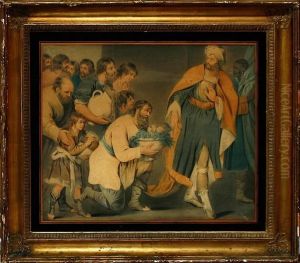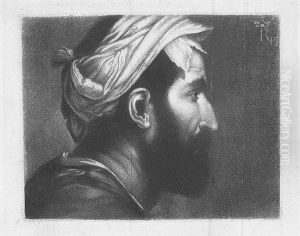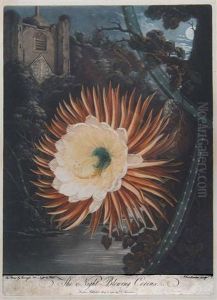Robert John Dunkarton Paintings
Robert John Dunkarton was an English mezzotint engraver who worked during the late 18th and early 19th centuries. Born in 1744, Dunkarton developed an interest in the arts at an early age, and he is particularly known for his skillful mezzotint engravings. Mezzotint is a printmaking process that allows for the creation of images with soft gradations of tone, which made it especially suitable for reproducing the tonal variations of oil paintings.
Dunkarton's career coincided with a period when British art was gaining prominence, and mezzotint engraving was highly sought after for reproducing the works of contemporary painters. He often collaborated with well-known artists of his time, translating their paintings into prints that could be collected and enjoyed by a wider audience. Dunkarton had the opportunity to engrave works by some of the most celebrated artists of the day, including Sir Joshua Reynolds, whose paintings he translated into mezzotints with great success.
In addition to his reproductions of paintings, Dunkarton created original portraits and was able to capture the likenesses and personalities of his subjects with a remarkable degree of fidelity. His engravings were appreciated for their technical proficiency and the way they conveyed the textures and subtle nuances of the original artworks.
Unfortunately, not much is known about Dunkarton's personal life or his training as an artist, which is a common issue with many craftsmen of the period. He lived through a dynamic period in British history, witnessing the American Revolution, the French Revolution, and the Napoleonic Wars, all of which had profound effects on the arts and society.
Dunkarton passed away in 1811, leaving behind a legacy as one of the skilled practitioners of mezzotint engraving. His works continue to be studied and appreciated by art historians and collectors for their beauty and historical value. Dunkarton's engravings provide a window into the artistic tastes and cultural values of his time, offering insights into the world of late 18th-century and early 19th-century Britain.



